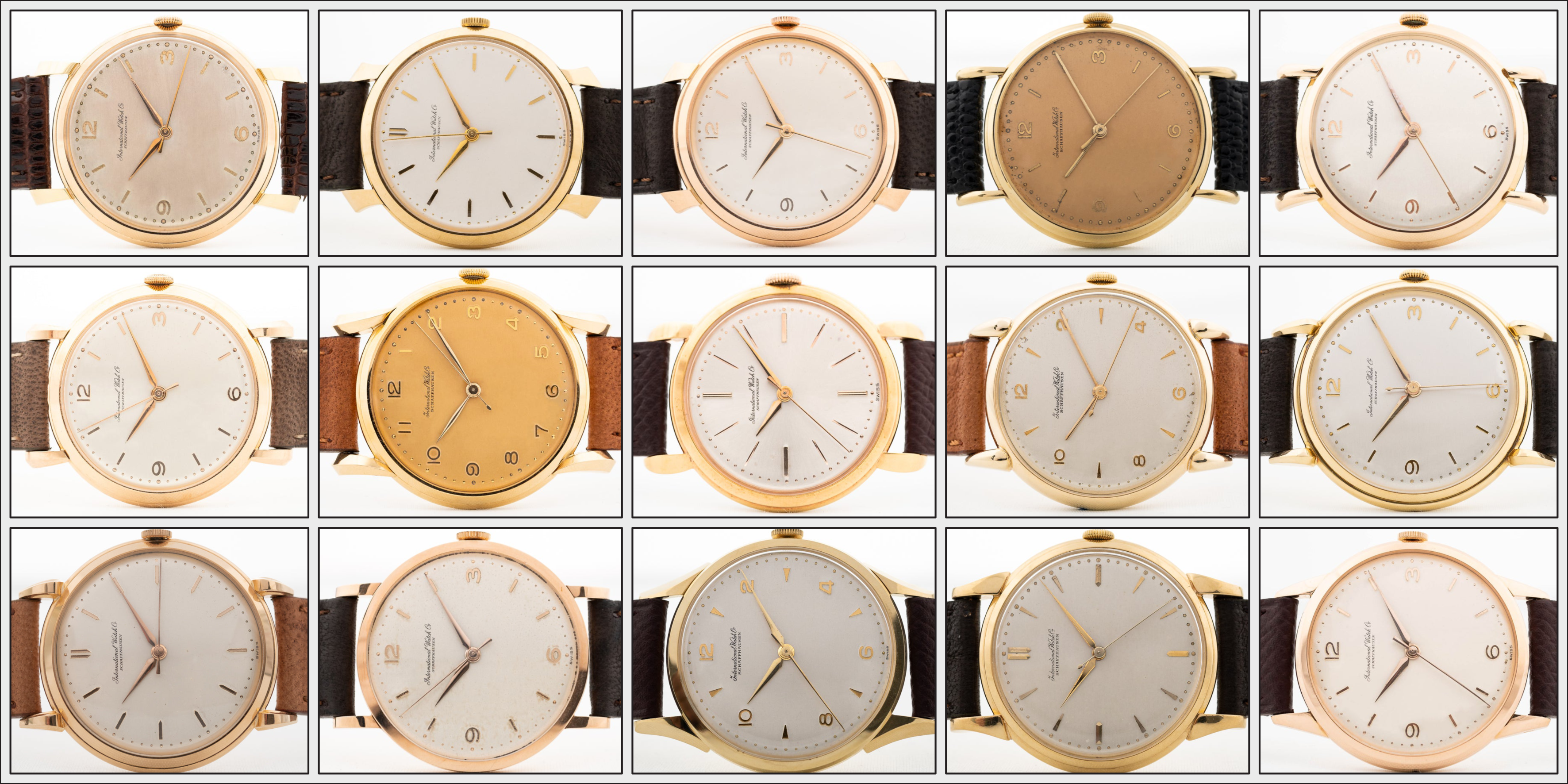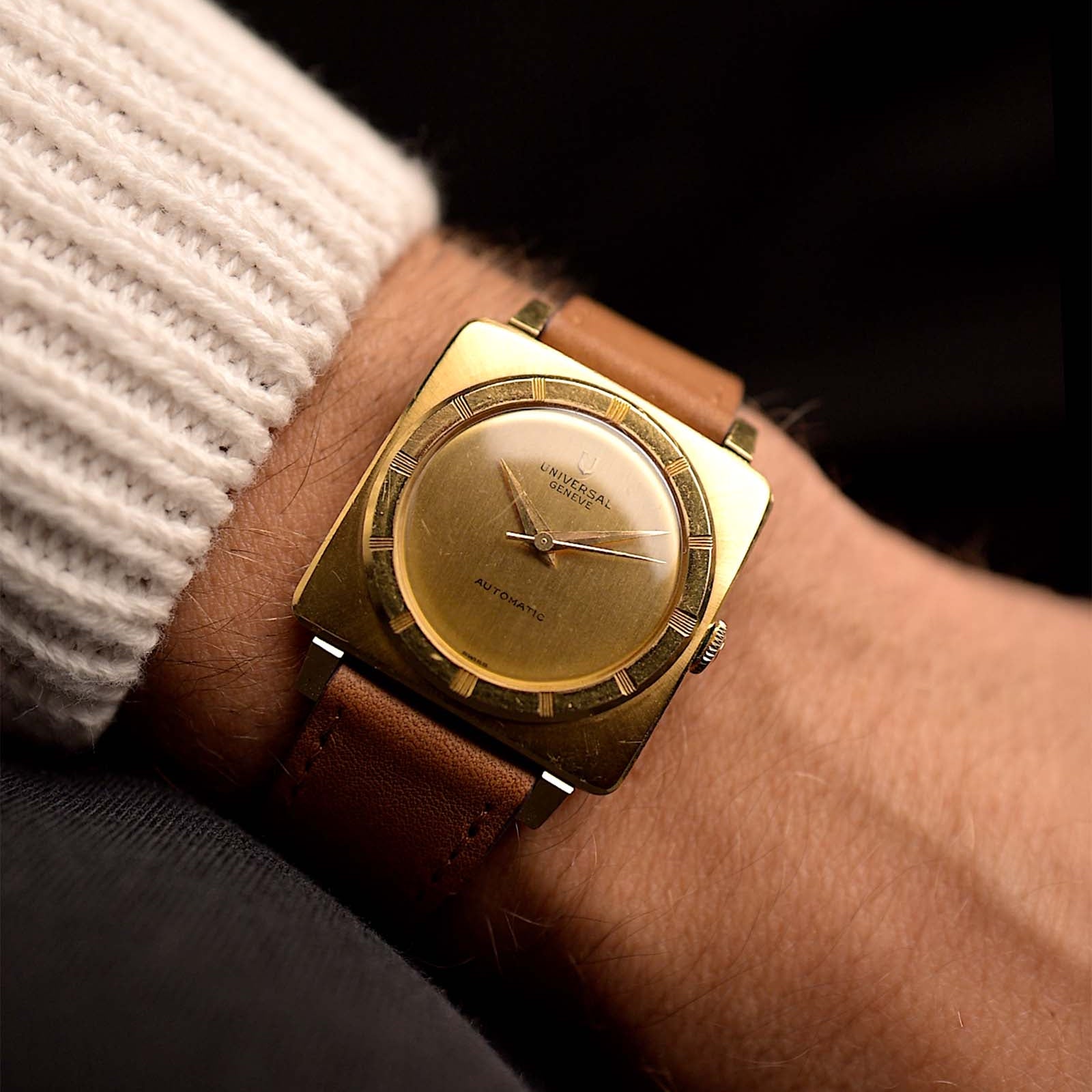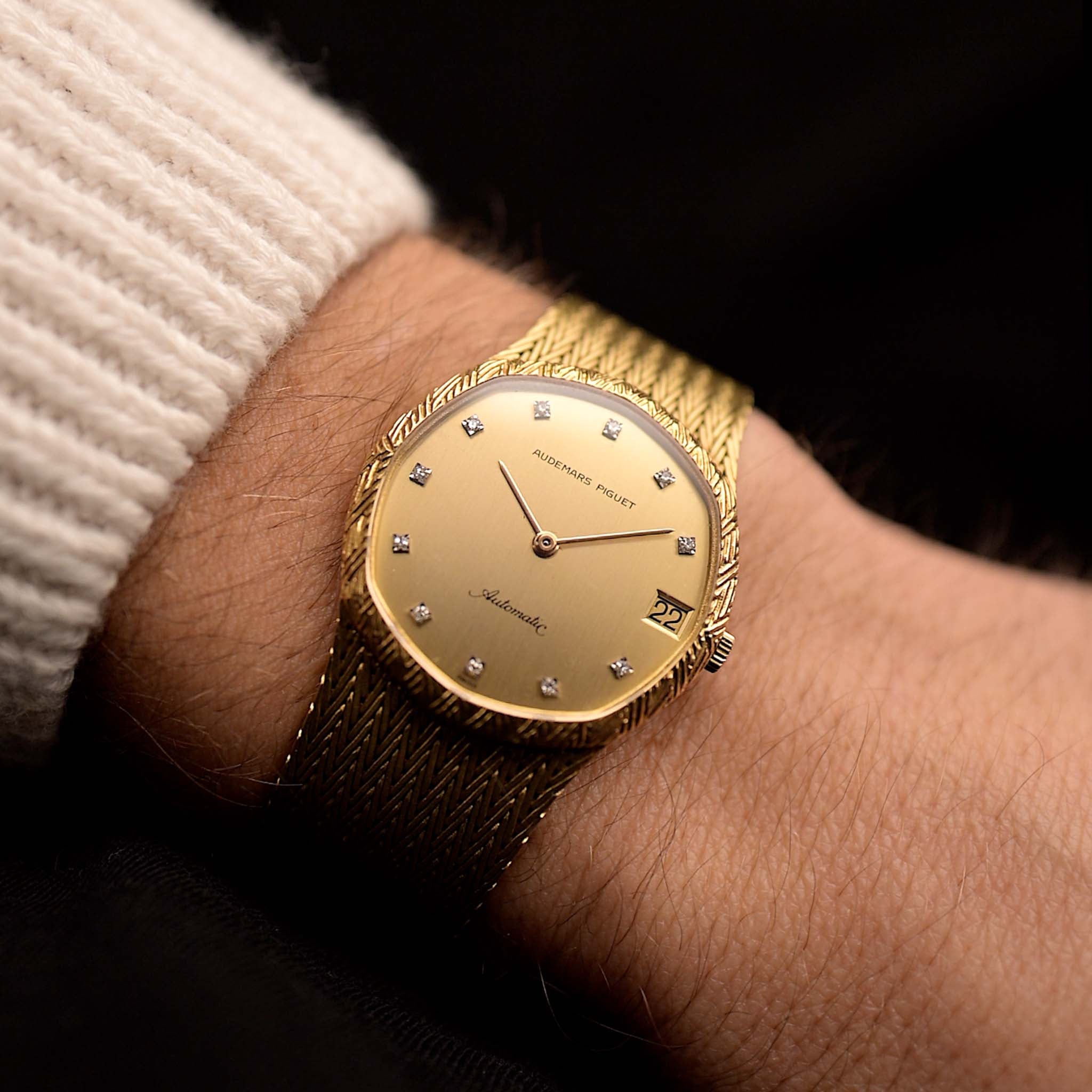What comes to mind when we speak about IWC's Cal. 89 dress watches? Exceptional lugs & their integration into the case construction. Overall, I counted at least 18 distinct case iterations from 5 case makers for the precious metal executions alone. With this overwhelming variety of styles I tried to break them down into four different categories based on their lugs: Shark Fin, Teardrop, Spider & Triangular. And importantly, these different categories fall put into three distinct time windows: Artdeco, Subtle and Modern Styles. Looking at these pieces through the lens of case and lug design we do not only gain insights how IWC used one of its (greatest) workhorse calibers through decades but also Swiss watchmaking and brand building of the 20th Century.
February 07, 2024
A Collector's Guide to IWC Cal. 89 - Exceptional Lugs & Cases

Marcus Siems @siemswatches
Collector, Author, Data Analyst
I have written about the IWC's Caliber 89 and the dress watches they were housed in before. I'm not the first to write about these magnificent mid-Century marvels and I'll probably not gonna be the last. However, among all these articles, guides and tales there's still something missing. Well, no just something but in my view one of the most integral aspects of these timepieces... What comes to mind when you think of the IWC Cal. 89...? Exceptional lugs & their integration into the case construction:
 Overview over distinct IWC Cal. 89 case constructions - Photos from Goldammer Archives.
Overview over distinct IWC Cal. 89 case constructions - Photos from Goldammer Archives.
We've sold several dozens of these pieces (a little over 50 to be exact) and have seen and handled almost countless different designs. It appears that with every Cal. 89 you'll find an almost unique configuration. I thus thought I'll give it my best and try to catalogue what different versions are out there.
From the 50 pieces we've handled over the last couple of years at Goldammer and an additional 30 listed online we counted at least 18 distinct case iterations from 5 case makers for the precious metal executions alone. Each of those coming with slightly different designs, sizes and lug shapes.
Discover our available Vintage Watches Collection >
1) Different Styles
With this overwhelming variety of styles I tried to break them down into four different categories based on their lugs: Shark Fin, Teardrop, Spider & Triangular.
These categories are to some extent subjective but there's some rationale behind all of it. When viewed full frontal (dial side) different lugs display four basic shapes defined by two principal dimensions - angular vs. rounded & expanding vs. compressing:
 Categorization of different IWC Cal. 89 dress watch styles based on lug architecture. Depicted are example executions from each category. Photos from Goldammer Archives.
Categorization of different IWC Cal. 89 dress watch styles based on lug architecture. Depicted are example executions from each category. Photos from Goldammer Archives.
1a) Shark Fin Lugs
Shark Fins are definitely one of my favorites. They stick out, are surprisingly unique to IWC and probably the easiest category to classify. They're also the most prominent iterations during the 1960s, the later end of the Cal. 89 era.
 IWC Cal. 89 watches with different Shark Fin Lug Styles. Photos from Goldammer Archives.
IWC Cal. 89 watches with different Shark Fin Lug Styles. Photos from Goldammer Archives.
Styles. The Shark Fin goes through an interesting evolution. The first examples can be traced to the early 1950s (ref. 587, 1952-60) and displayed a rather long fin and downward angled lugs in the profile (left). The classic Shark Fin is the last out of the three (1960-69) and also featured the shortest and straightest fin as well as the largest diameter (37mm, right). In between we can find a transitional case with intermediate fin length (1958-59, middle). It further dissociates from the latest iteration by its slightly curved wing and the slimmest step of the bezel.
Case Makers. All three cases were made by different case makers. The "Long Shark" was produced by Nardin & Cie (36.5mm, hammerhead #143), the transitional "Shark II" by Chatelain & Witz (36.5mm, #109) and the "Classic Shark" by Le Fils de Jules Blum (#105)[1].
1b) Teardrop Lugs
Contrary to the Shark Fin lugs, Teardrop Lugs are a bit harder to define. As I went with shape and chamfer orientation my Teardrop Lug might be something else to you but for the sake of a unifying vocabulary let's stick to the name. Yet, independent of how we want to call them, these lug styles have been particularly prominent on earlier Cal. 89 pieces.
 IWC Cal. 89 watches with different Teardrop Lug Styles. Photos from Goldammer Archives.
IWC Cal. 89 watches with different Teardrop Lug Styles. Photos from Goldammer Archives.
Styles. We can probably break this category further down into lugs that are faceted or not. In the latter we can put the classic Teardrop (right, 1950-54) and its slimmer version (left, 1948). The faceted Teardrop also comes in two different styles - straight (middle right, 1950) and inward facing (middle left, 1949-56). This last inward facing faceted Teardrop design is also better known as Bombé lugs. All four share a surprisingly similar lug profile.
Case Makers. All four examples through the ~20 year production run were produced by different case makers: "Slim" by Nardin & Cie (36mm, #143), the "Classic" by Charles Dubois (36.5mm, #170), "Faceted" by Le Fils de Jules Blum (37mm, #105), and "Bombé" by Chatelain & Witz (36.5mm, #109).
1c) Spider Lugs
The Spider Lugs feature an outward facing chamfer orientation. They're also most prevalent during the early days of the Cal. 89 in the late 40s and 50s. This timely overlap with Teardrop Lugs makes it even harder to draw a strict line between the two on a conceptual level.
 IWC Cal. 89 watches with different Spider Lug Styles. Photos from Goldammer Archives.
IWC Cal. 89 watches with different Spider Lug Styles. Photos from Goldammer Archives.
Styles. The general aesthetic follows the era specific elegance of 1940s/50s dress watches. With the four styles we see an evolution from round (left, 2-piece case, 1947), over one central edge (middle left, 1948-49), to double faceted pieces (middle right, 1950-56). We further see a bit of an outlier with the elongated Spider Lugs appearing in the early 1950s (right, 1951-55).
Case Maker. This style comes with the exception that most of the different iterations have been done by the same case maker: Wyss & Co. (#149). "Round", "Single Faceted" and "Long Spider" all come with the #149 hammerhead hallmark. The latter can further be seen in gold plated executions made by Huguenin Freres (HF). The intricately made "Double Faceted" Spider was on the other hand produced by Nardin & Cie (#143).
1d) Triangular Lugs
The last category follows the same scheme as above and features lugs with an angular and compressing front view, thus Triangular Lugs. These styles are also the most classic ones and can be found on late 50s examples in particular. Yet the subtle first glance might deceive you as details do make them stick out. Designs far from being plain...
 IWC Cal. 89 watches with different Triangular Lug Styles. Photos from Goldammer Archives.
IWC Cal. 89 watches with different Triangular Lug Styles. Photos from Goldammer Archives.
Styles. Since this category also summarizes the leftovers to some extent the variation in style is dramatic to say the least. We got on the one end lugs that appear very basic from frontal view but reveal a very cool "Tear Profile" (left, 1948). We also got the "Straight Look" (middle left, 1958-63) and the "Dog Leg" (1957), which both are classics of the time and grant the case a very slim and understated profile. Particularly the latter one also closely resembles Omega Pie-Pan Constellation cases of the time. And lastly we got the ultimate oddball... The "Hinged" lug style (middle right, 1955-59) is a reference/model completely distinct from everything else. First, it's not exactly a triangular shape but rather very straight. Second, they were among the smallest in diameter (35mm). And third, it comes with a flat bezel and a rectangular case profile. All other Cal. 89 watches we've come across so far feature a domed bezel and convex case flanks (exception: "Dog Leg")!
Case Makers. The oddball "Hinged" lug examples were made by Le Fils de Jules Blum (35mm, #105), the "Tear Profile" examples by Nardin & Cie (36.5mm, #143), and the "Straight Look" and "Dog Leg" examples by Charles Dubois (36.5mm, #170).
2) Summary & Conclusion
Among all the different references and models and the long production run of IWC's Caliber 89 we can see some interesting patterns emerging and an evolution of style over the years.
- when reading on mobile device: please rotate your phone -
| Category | Style | Maker | Size | Period |
|---|---|---|---|---|
| Shark | Long Shark | #143 | 36.5mm |
1952-60 |
| Shark II | #109 | 36.5mm | 1958-59 | |
| Classic | #105 | 37mm | 1960-69 | |
| Teardrop | Fancy Tear* | #105 | 35mm | 1946 |
| Slim | #143 | 36mm | 1948 | |
| Bombé | #109 | 36.5mm | 1949-56 | |
| Faceted | #105 | 37mm | 1950 | |
| Classic | #170 | 36.5mm | 1950-54 | |
| Spider | Lyre Spider* | #149 | 35mm | 1947 |
| Round Spider* | #149 | 36mm | 1947 | |
| Faceted | #149 | 36.5mm | 1948-49 | |
| Double Facet | #143 | 37mm | 1950-56 | |
| Long Spider | #149 (HF) | 36mm | 1951-55 | |
| Triangle | Tear Profile | #143 | 36.5mm | 1948 |
| Straight Look | #170 | 36mm | 1958-63 | |
| Hinged | #105 | 35mm | 1955-59 | |
| Dog Leg | #170 | 36mm | 1957 | |
| Carree | #143 | 30mm | 1953 |
Table 1. Overview over distinct IWC Cal. 89 case constructions and lug styles - Based on Goldammer Archives, Schoene Sammleruhren & Chrono24**. Asterisks indicate 2-piece case constructions. Bold Italic examples are the more common iterations with a relatively larger sample size (and thus slightly more reliable estimates of production period).
Putting together all we know from the roughly 25 years of Cal. 89 dress watch designs our four categories can be attributed to three time brackets: In the beginning we can see very curvy lug styles that still resemble the late Artdeco to some extent. I hereby mean the Spider and Teardrop lug examples that cluster around the late 1940s and early 1950s. Fittingly, the "Tear Profile" lugs fall into the same time.
After the playful Artdeco phase we observe the designs going into a more straight and subtle transition period with Triangular lugs during the mid-1950s to early-1960s. And finally, the IWC Cal. 89 dress watches enters a very modern, angular and quite expressive period with the shorter, sturdy and almost brutal Shark Fin lugs during the 1960s.
 Evolution of vintage IWC Cal. 89 lug and case design from 1946 to 1969. Photos from Goldammer Archives.
Evolution of vintage IWC Cal. 89 lug and case design from 1946 to 1969. Photos from Goldammer Archives.
Looking at these pieces through the lens of case and lug design we do not only gain insights how IWC used one of its (greatest) workhorse calibers through decades but also about Swiss watchmaking in the 20th Century. In other words, the Cal. 89 evolution is the perfect microcosmos to understand the incremental refinement of watch design to the tastes of the time.
Cumulated over several decades I'd argue there's probably a design for everyone. If you're into vintage, there's a IWC Cal. 89 for you... Or maybe you want to get your hands on all of them?
Discover our available Vintage Watches Collection >
** All the production period estimates are based on a limited sample size and the actual periods can vary. Yet at least for the more common examples (highlighted in Bold Italic) we do indeed observe a clustering around relatively short time windows of a few years.
References
[1] Swiss Poincons de Maitre; David Boettcher, Vintage Watchstraps; [Link]
All rights on text and graphics reserved to the Author.




























Leave a comment